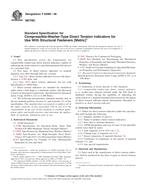1.1 This guide outlines how to visually assess exterior stone masonry walls and facades to determine their general condition. Examining key features of the construction can help identify and diagnose problems which require repairs or corrective action. Such an examination can expose conditions which may be addressed with maintenance and minor repairs, or may require expert assistance. This guide is not intended to be used for buildings requiring major exterior rehabilitation or structural repairs.
1.1.1 This guide applies to walls of solid stone or dimension stone used as a cladding. Stone cladding is typically connected to a backup material with a variety of anchoring methods, including traditional hand-set masonry anchors such as straps, dowels, cramps, hook-and-eyes, dove-tails, wire ties, and the like. Joints between stones in these types of buildings are usually filled with mortar or sealant. Sealant-filled joints are usually designed to accommodate structural and thermal movements.
1.2 This guide specifically excludes dimension stone used in interior building surfaces, flooring or paving, slate dimension stone used as roofing. Though they share some similar assessment and maintenance concerns, thin stone (less than 2 inches nominal thickness) exterior cladding, and stone cladding attached to metal flames are also excluded due to their unique design characteristics and performance requirements. Although procedures and cautions listed herein may apply to walls and facades containing semi-dimension, or partially sized, stone in the form of split-face, or rubble and to stone-facade concrete panels, the guide is not specifically directed to such stone use. It does not address removal of small-area stains.
Product Details
- Published:
- 04/10/2001
- Number of Pages:
- 7
- File Size:
- 1 file , 250 KB


